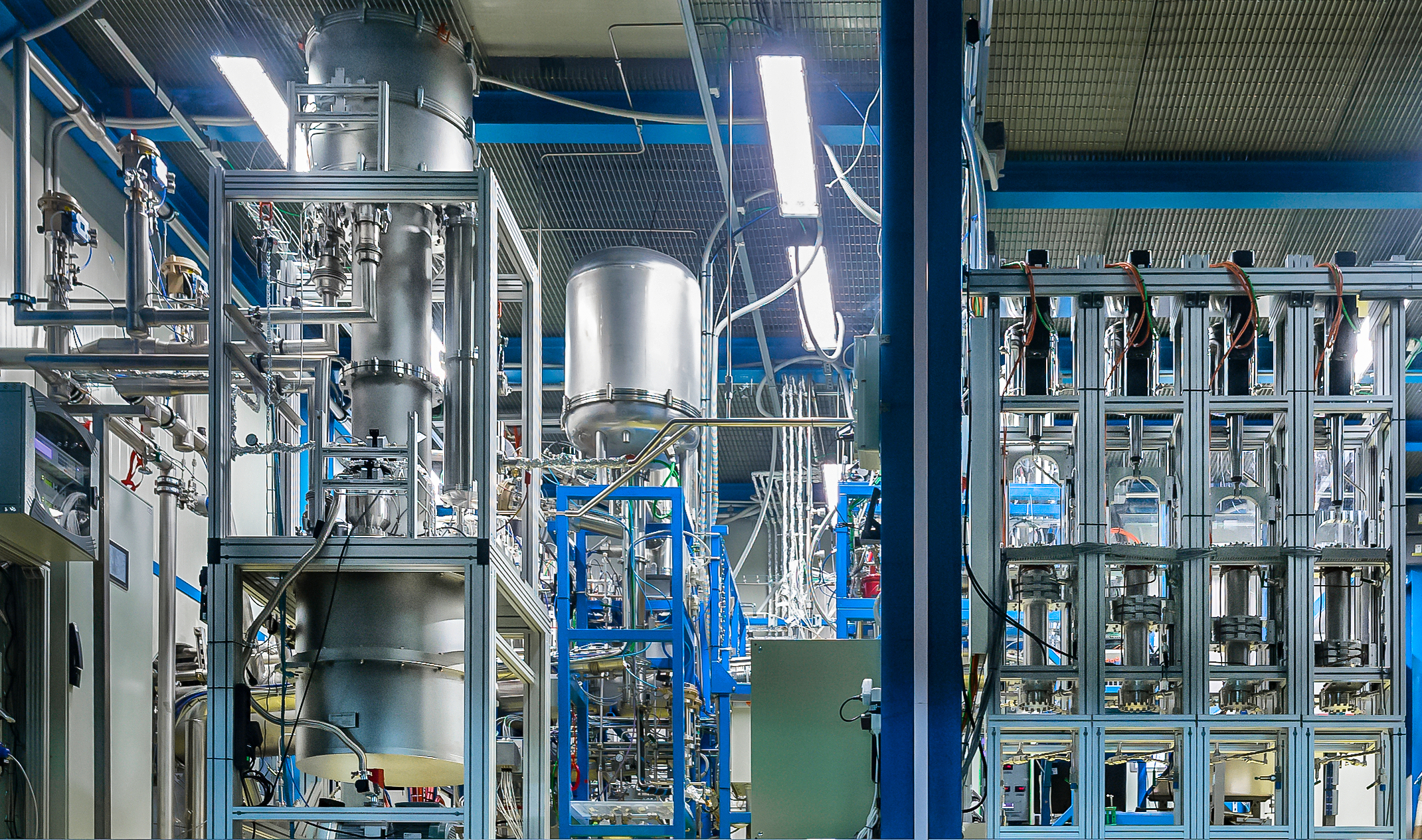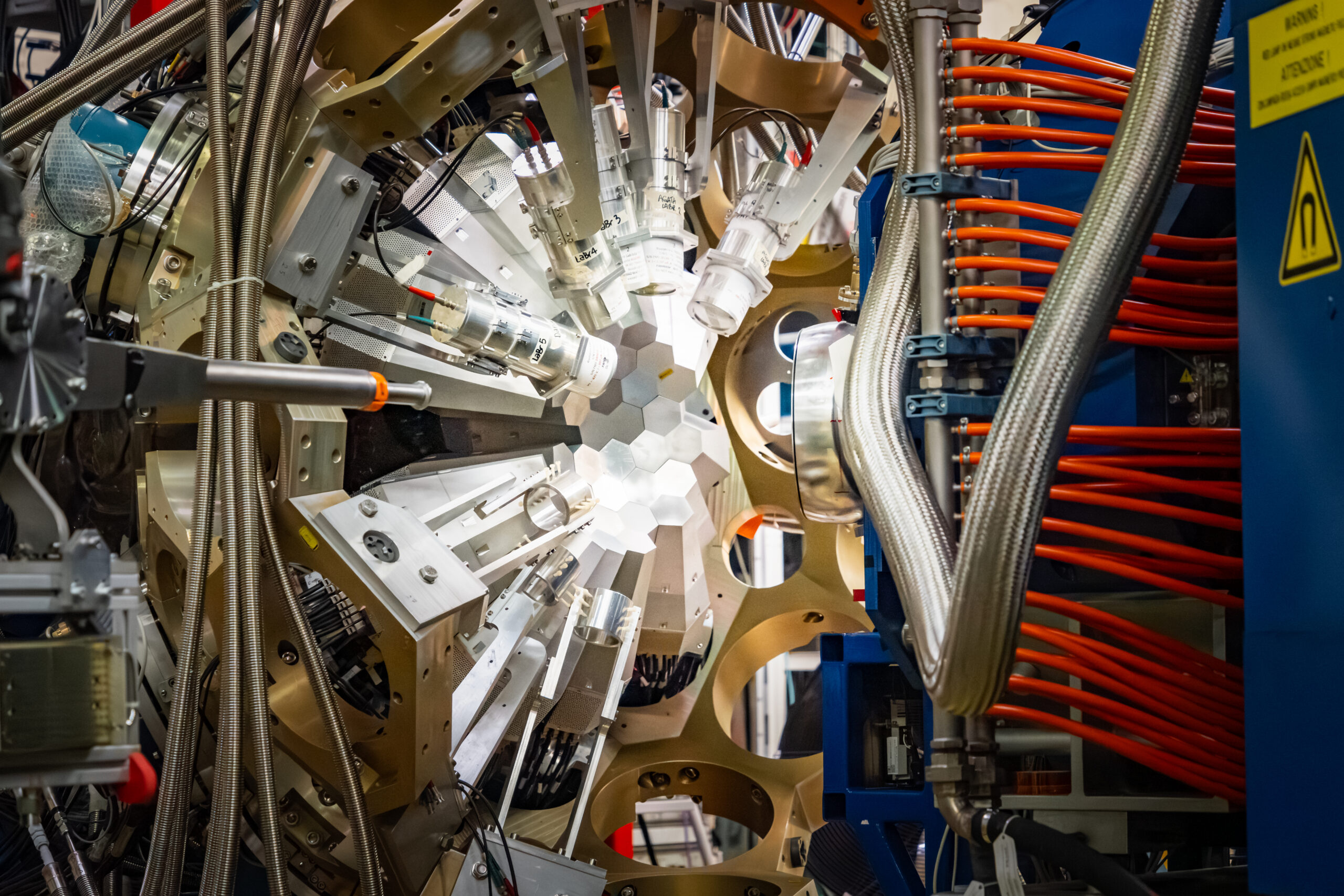 On 27 July, a few days after publication of the measurements on pentaquarks – the LHCb experiment at CERN’s Large Hadron Collider – the results of a new high-precision measurement performed on the decays of baryons containing the b quark were published in Nature Physics and presented at the International Conference of the European Physical Society (EPS) being held in Vienna. The study helps to clarify the experimental framework for the possibility of the existence of new physics in electroweak interactions. This result was obtained by studying the decay of the baryonic particle called Lambda b (Λb) which decays into a proton, a muon and a muon antineutrino. At the quark level, in this process a b quark of the Λb turns into a u quark resulting in a proton, while emitting a W boson that decays into a muon and its antineutrino. This type of measurement is called “exclusive”, because it only considers a specific type of decay. The parameter measured in this article, called Vub, describes the probability of a b quark turning into a u quark. This parameter is part of the Cabibbo-Kobayashi-Maskawa (CKM) matrix, which describes all the possible quark mixings. Since the Standard Model is not able to predict the absolute value of the parameters of the CKM matrix but, more simply, consistency relations which these must satisfy, accurate experimental measurements of the various processes, involving different types of quarks, are of extreme importance to understand whether the CKM mechanism is the actual key to the interpretation of all mixing phenomena between quarks in the sub-microscopic world. Should an inconsistency between the different elements of the matrix be found, this would represent an indication of the existence of new physics beyond the theory that we know today. The result published by LHCb is not in agreement with the “inclusive” measurements of this parameter published in the literature. In these inclusive measurements, Vub is obtained by studying all the possible decays of B mesons in which a b quark becomes a u quark, but without considering a final state in particular. The Vub value from inclusive measurements is not compatible, within the experimental uncertainties, with the provisions of the Standard Model, and this can be interpreted with the need to correct the Standard Model by introducing new physics. This Vub measurement made by LHCb, in perfect agreement with the exclusive measurements previously carried out by LHCb and by the BaBar and Belle experiments, is instead perfectly consistent with the Standard Model as we know it, thus contributing to dispelling doubts about the possible existence of new aspects of electroweak interactions. The discrepancy between inclusive and exclusive Vub measurements, however, at the moment remains an open question that will continue to be investigated in the coming years, both at the experimental as well as theoretical level. The result is the first of its kind to have been obtained from an experiment using collisions between hadrons, as the LHC, as well as the first to have been obtained by studying the decay of a baryon containing a b quark. The precision required for this type of measurement is achieved thanks to the excellent performance of the LHC and the LHCb.
On 27 July, a few days after publication of the measurements on pentaquarks – the LHCb experiment at CERN’s Large Hadron Collider – the results of a new high-precision measurement performed on the decays of baryons containing the b quark were published in Nature Physics and presented at the International Conference of the European Physical Society (EPS) being held in Vienna. The study helps to clarify the experimental framework for the possibility of the existence of new physics in electroweak interactions. This result was obtained by studying the decay of the baryonic particle called Lambda b (Λb) which decays into a proton, a muon and a muon antineutrino. At the quark level, in this process a b quark of the Λb turns into a u quark resulting in a proton, while emitting a W boson that decays into a muon and its antineutrino. This type of measurement is called “exclusive”, because it only considers a specific type of decay. The parameter measured in this article, called Vub, describes the probability of a b quark turning into a u quark. This parameter is part of the Cabibbo-Kobayashi-Maskawa (CKM) matrix, which describes all the possible quark mixings. Since the Standard Model is not able to predict the absolute value of the parameters of the CKM matrix but, more simply, consistency relations which these must satisfy, accurate experimental measurements of the various processes, involving different types of quarks, are of extreme importance to understand whether the CKM mechanism is the actual key to the interpretation of all mixing phenomena between quarks in the sub-microscopic world. Should an inconsistency between the different elements of the matrix be found, this would represent an indication of the existence of new physics beyond the theory that we know today. The result published by LHCb is not in agreement with the “inclusive” measurements of this parameter published in the literature. In these inclusive measurements, Vub is obtained by studying all the possible decays of B mesons in which a b quark becomes a u quark, but without considering a final state in particular. The Vub value from inclusive measurements is not compatible, within the experimental uncertainties, with the provisions of the Standard Model, and this can be interpreted with the need to correct the Standard Model by introducing new physics. This Vub measurement made by LHCb, in perfect agreement with the exclusive measurements previously carried out by LHCb and by the BaBar and Belle experiments, is instead perfectly consistent with the Standard Model as we know it, thus contributing to dispelling doubts about the possible existence of new aspects of electroweak interactions. The discrepancy between inclusive and exclusive Vub measurements, however, at the moment remains an open question that will continue to be investigated in the coming years, both at the experimental as well as theoretical level. The result is the first of its kind to have been obtained from an experiment using collisions between hadrons, as the LHC, as well as the first to have been obtained by studying the decay of a baryon containing a b quark. The precision required for this type of measurement is achieved thanks to the excellent performance of the LHC and the LHCb.





